
Architecture and planning in the time of coronavirus—what’s next?
While we were all looking forward to having 20/20 vision this year, just a few months in, we got the exact opposite. The global COVID-19 pandemic—which led to the government implementing an enhanced community quarantine (ECQ) across Luzon (swiftly followed by Visayas and Mindanao) from an initial period of March 17 to April 14, 2020—has put every facet of the status quo under a microscope from which we have been unable to peel our eyes away from. At the time of writing, the ECQ in Luzon was first extended to April 30, and subsequently to May 15, before transitioning to modified enhanced community quarantine until May 31, with other areas of the country also planning and implementing eased lockdowns, respectively.
Regardless of the degree of lockdown, what remains is a stifling uncertainty that hangs over every sector as the powers that be attempt to jump-start the economy and get the country’s engines running again. The path ahead for the built environment is no different. BluPrint caught up with its former associate editor turned urban designer, Lawrence Carlos, and Leandro Poco, urbanist and architect, over a Zoom call the weekend before the first ECQ extension was about to end, to gauge how the pandemic can refocus the issues affecting the architecture and urban planning industries to beyond their own looking glasses.

Leandro Poco: When it comes to discussions of cycling and pedestrian connectivity to help our essential workers get to work, it would have been theoretically ideal if we open up some of the gated villages to let them pass through. That’s the high-level thirty-thousand-foot view, but when you get down to the ground level and start analyzing spatial configuration hindi madali, kasi the way our cities or suburbs are already configured, is that it prevents interconnection between each other, and to exclude for privacy and security.
In the north and south suburbs that feed into Metro Manila—Bulacan, Cavite, Laguna, Rizal, and in Paranaque, Las Piñas—there are very few opportunities to interconnect. Even if you try to create a walkable slow street network, people will only walk if it’s convenient and within reasonable distance to get to either a grocery, services, offices, and parks. But if you’re still in the midst of houses after walking at least four-hundred meters, then why walk? I’ve discussed the idea with people with influence within these village associations and it takes more than noblesse oblige to open up a gated community to cyclists or pedestrians, or even allow retail and services to set up shop within their communities.
YOU MIGHT LIKE: Cycle City: What does it take to make bike lanes work?
Lawrence Carlos: In other countries, especially in Europe, and other more developed urban centers, communities are planned such that the main thoroughfare of movement is away from residential areas. The highest frequency of people passing through is not by your doorstep. Main streets are very well connected to streets within residential communities and near public transport. So, it makes sense that the place where people need to walk to is where all of those stops would be.
Poco: It’s the intentional separation of through traffic with local traffic. The UK and other European countries have that in their organic grid system. Even with some overlap in the high streets, there’s enough redundancy with the grid system that through traffic can go outside of the local streets while the local streets still maintain some character and local activity like retail. Dito sa Pilipinas walang ganun. Our suburban or agrarian road network outside of our poblacions and our CBDs are largely dendritic in configuration. Through and local traffics are mixed together, with local traffic having to pass along global through routes to get anywhere. This creates congested local spine roads like Alabang-Zapote, Sucat Road, and so on.
Even before coronavirus started spreading rapidly, I said this would be bad for urbanism. The pandemic will stall urban densification for many years because of the fear and trauma of being in crowds, and it will be very convenient to cast outsiders as the infected. This will push people to step away from the densification of cities and go back into suburban, and rural settings.
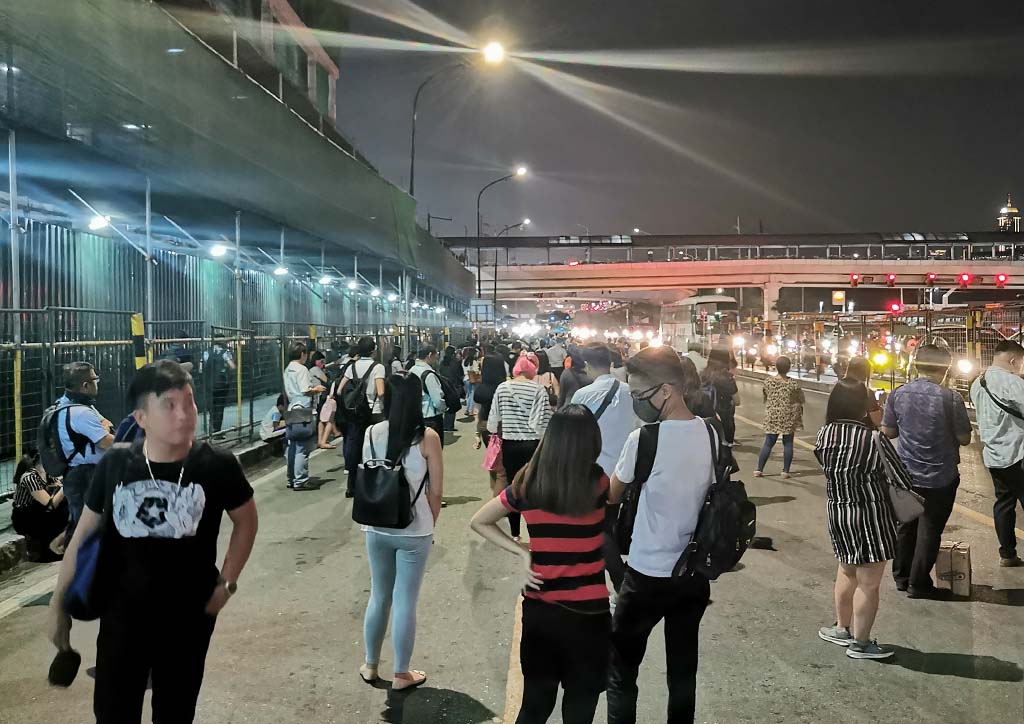
Carlos: Going back to your point about urbanism being set back many years, there’s been plenty of discussion about the new normal—it’s the new catchphrase. If we think of what is perceived as the old normal, we were already in crisis, especially here in the Philippines. The new normal is slightly misleading, because it suggests that things were okay before, when in fact, they simply weren’t in many respects.
Poco: That’s true. The new normal will be localization on a broad scale. The new normal is the previous old normal. It’s the medieval normal before this global interconnectedness we take for granted. Things will start to get localized. If we’re thinking through what localization means, one possible scenario is how our diffused built environment will force supply chains to penetrate deeper into residential communities. Right now, supply chains only go as far as the global routes. When I talk about supply chains, I’m talking about retail, supermarkets, and groceries. Malls are always in the globally accessible positions along arterials and spine roads. It doesn’t make sense for the supply chain to go deep into local communities because the local catchment populations will come out to them anyway. That’s why there are malls in critical junctions and intersections of these major roads. There’s an economy of scale, you’re able to capture all these people, and gather all of them in this huge space, and you’re then able to secure them easily as a captive market.
READ MORE: The new normal is beyond this pandemic, two architects and a public policy consultant say
The new normal could force people to live locally, work on a part-office, part-work-from-home basis, commute less. This puts the emphasis on the big retailers to reconsider their format and strategy. Now, they have to start thinking in the vein of Tesco Express and Sainsbury’s Local (local grocery chains run by the largest supermarkets in the UK), which are smaller in scale, and serving smaller catchments.
I’m sure you’ve seen so many motorcycle delivery drivers lately, which are last-mile courier services acting as an expensive substitution for us–instead of going to the stores or malls ourselves, we just place an order online and have it delivered to us. It’s a consequence of how deep our communities are. Instead of a fleet of separate motorcycles inefficiently servicing so many houses with patchwork orders, why can’t one or two grocery shops or retailers just open within these communities, served efficiently by a few trucks? These places are smaller but being closer to residents allows visits and purchases to occur more frequently, thereby reducing the occupant load and infection risks. I’m not sure how retailers and villages or subdivisions will react to this because, so far, they don’t see the opportunity yet. You can consider this as part of the Live-Work-Play narrative, except this means retooling existing communities to have those elements within, instead of developing new urban enclaves from scratch.
The new normal is slightly misleading because it suggests that things were okay before, when in fact, they simply weren’t in many respects.
Carlos: We’re seeing the sort of restrictions that, because of the demand and limited hours in which people can go shopping, the entire process of doing your normal routine is exacerbated. It was okay before because everyone could go whenever they wanted to. Large supermarkets can normally handle that demand but now these smaller stores have to play a more important role. The difference between the Tesco supermarket and Tesco Express model, and your Puregold or your Robinson’s Supermarket versus your 7-Elevens is that with the latter, you don’t have the sort of the fresh produce in these smaller stores. It’s a question of supply.
Poco: There has to be a re-evaluation on the scale, the localization, the catchments of these supply chains, and how we distribute goods. Maybe big stores can start evaluating how to improve their offerings if they adopt to smaller neighborhood formats.
Carlos: There are many systems that everyone is re-evaluating as the target date for lifting the lockdown moves, but we don’t seem to be seeing the end of it soon. We’re still in lockdown and it’s been extended.
YOU MIGHT LIKE: (Euclidean) Planning is dead. Long Live Urbanism.
Poco: I’ve been listening to a lot of these thought leaders about the new normal and apart from really obvious points, no one seems to be able to think beyond what it really means. Because partly, I think there’s an incentive for them not to acknowledge it and maintain a positive market sentiment. I understand that we all have an interest in the economy bouncing back quickly.
This is problematic too, however. We can’t think that this pandemic will be the last to hit us. There will be a lag between now and if-and-when the vaccine is developed and distributed worldwide. In the meanwhile, we have to live with the virus. This work-from-home experiment will change how offices use space, and how those who can work from home—the white-collar information workers and managers like you and I will adapt their homes to be both livable and workable settings simultaneously.
Meanwhile, the costs of retrofitting and adapting offices, and operating businesses will be affected by us living and working with the virus. Even if adaptations are made and businesses open, the next question is whether people will actually go to these places to do business—because of the fear of the virus, or because their purchasing power or demand has effectively been reduced by the economic decline caused by the pandemic. So, it’s a question of purchasing power and confidence. Both may require heavy government intervention to turn from negative to positive. Otherwise, businesses will still close anyway for not having any customers.
[one_half padding=”0 15px 20px 0″]
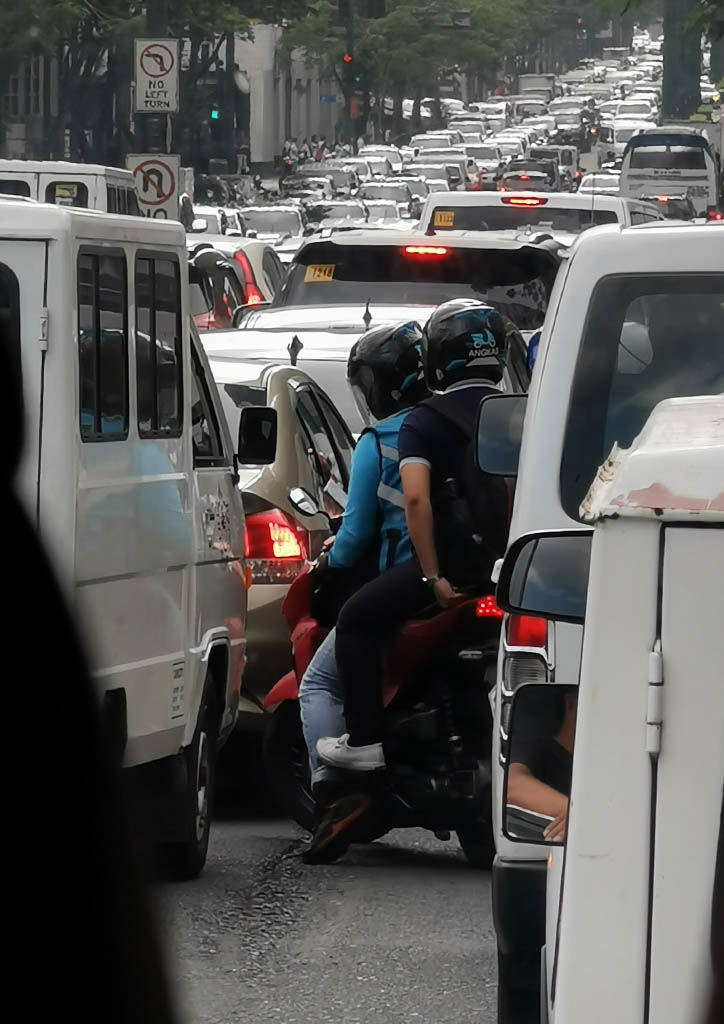
Carlos: The recently published Asian Infrastructure Finance 2020 report, based on 2019 data, gives an overview of all the countries in Asia, and there’s a section that outlines the impacts of the COVID-19 crisis. It talks about two things: firstly, an increasing trend in medical real estate and infrastructure, and secondly, the MedTech digital infrastructure to support this.
In terms of the latter, the digital infrastructure that both the government and the healthcare industry needs in order to manage data and implement efficient operations to capture data from testing is imperative. In addition, it’s about being able to use that data effectively so that people who aren’t infected yet are appropriately informed, rather than what we’re currently seeing—a whole cacophony of misinformation from unofficial channels, and also even official channels disseminating information that isn’t backed by data or science. How do you see it moving forward from here?
READ MORE: Why JRS + Partners’ hospital network is an ideal model for pandemics such as COVID-19
Poco: The thing you mentioned about data and the sheer volume of information channels ties in with the information environment we have. It’s not just us who are struggling with this. Evidence-based planning and design—nevermind evidence-based policy and decision making—requires some form of literacy to not just understand data, but also to vet the veracity of sources, and trust in the scientific method in threshing out the false from what could be called objectively true. In some ways, humanity’s weakness is that we are all suckers for a good story or narrative. Sometimes narratives don’t fit or distort the objective facts.
On digital infrastructure for medicine, I can’t claim to be an expert, but the clinical model of patient care is still very much face-to-face and requires spatial engagement. Now that it’s risky to visit a hospital to see a doctor for a non-COVID-19 case, doctors are forced to adapt by consulting online and changes their service model. The transition simply cannot entirely move into telemedicine, because the quality of care that you’re able to deliver is affected by not being able to diagnose by sight or touch, and intuitively reading the patient’s wellbeing.
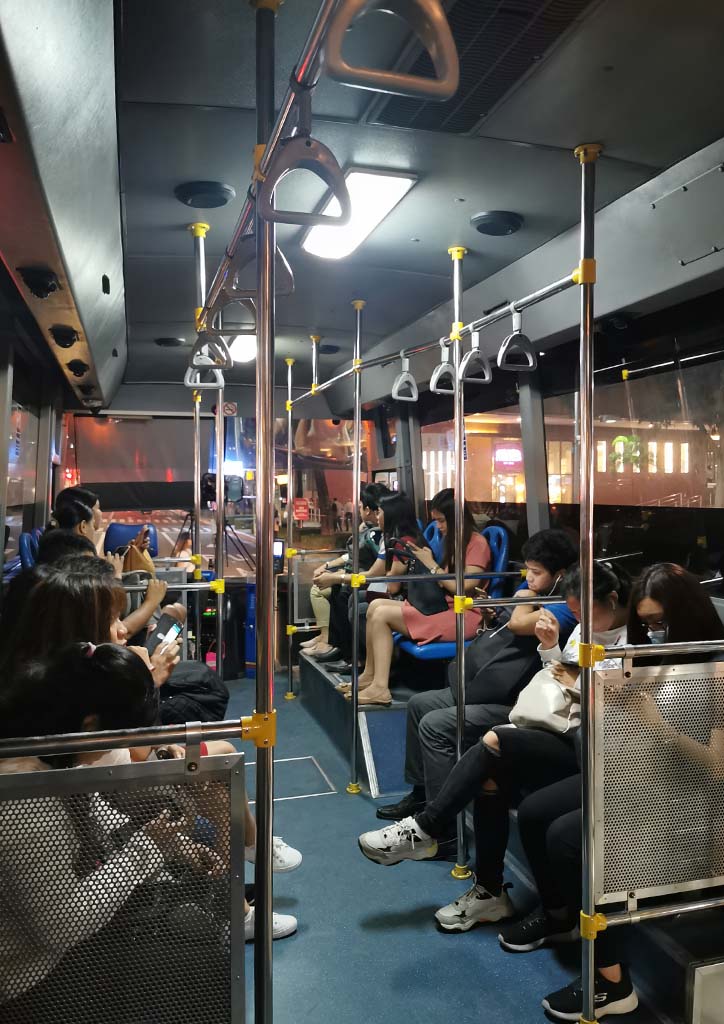

Right now we’re hovering on the non-spatial effects. Let’s try to pull it back to what it means spatially. One of the interesting case studies that were presented to us at UCL was a paper on hospital infections in the NHS (National Health Service, UK). The study plotted out the accessibility, integration, and route choice within a hospital corridor system—who the vectors are: nurses, head nurses, doctors, specialists, orderlies, cleaners, etcetera—and they tracked the rates of cross-infection. The findings point to infections occurring in hallways. Why? Because they are compressed spaces that are free for movement. There are waiting areas, people queued up, patients in wheelchairs and stretchers, and equipment passing through. It’s where the greatest number of people cross each other’s lines of movement.
I saw a video of how the contamination was being handled in the hallways of hospitals in Italy. They drew a red line in the middle of the hallway, saying, “Okay, if you’re on this side, you enter a COVID-19 ward. If you’re on this side, you’re on the clean side.” But if you look at it, it’s only about 1.2 meters left, 1.2 meters right. In terms of hospital planning, the hallway is in question.
YOU MIGHT LIKE: 10 Things to observe for PUI and PUM COVID-19 quarantine hospitals
The Dutch tried to reconfigure the outpatient hospital model. Instead of having hallways with doctor’s clinics in them, they put all the doctors in common knowledge rooms with colleagues of different but similar specializations. This is similar to a common faculty room where they can share information and have discussions among themselves. Then you have rows of consultation rooms or patient rooms feeding off these common knowledge rooms. Connecting to these consultation rooms, you have a huge patient waiting hall.
Carlos: Is it like a panopticon model where rooms emanate from the center and then people are distributed around so that they’re far enough from each other?
Poco: What happened, kasi nga napansin nila, is that most of the interaction does not happen in the doctor’s office but in the hallway, right between a patient and the doctor’s office. What they proposed is that the patient goes into the consultation room, but instead of meeting just one doctor, the patient ends up meeting his or her whole medical team coming from the central knowledge pool. Instead of queueing five times throughout the day just to see different doctors, you’re now able to queue just once and then meet all four or five doctors sharing the same data and conferring on your situation. It’s an interesting typology that makes patient care holistic while eliminating the possible contamination risks from hallways.
Right now we’re hovering on the non-spatial effects. Let’s try to pull it back to what it means spatially.
Carlos: What I’ve seen from how hospitals in Europe are set up is they have reconfigured hospitals so that they’re not just going to let anyone enter ER without a valid reason (what a valid reason is also under discretion, mind you), while segregating the flows of COVID-19- and non-COVID-19-related cases. The normal model is being flipped, but some of these hospitals don’t have the ideal spatial requirement to segregate as easily. There will still be an overlap of movement, which hospitals will try to minimize as best as possible, but because these hospitals are already oversubscribed, there’s an imbalance in who they’re trying to serve as the spike in the number of admissions far outweigh the ability to evenly apportion spaces so that everyone is treated, whether patients are COVID-19 cases or not.
Poco: What it means is that the ingress and egress of people through built structures, whether it’s a hospital, a mall, or an office, suddenly becomes a ceremonial processional space. The interstitial layer between outside and inside becomes larger because of processes—temperature scanning, disinfection, security checks, and so on. It’s almost going be like flying through NAIA or any international airport. You have to figuratively ‘hop, skip, and jump’ through hoops to make sure that you’re clear before you actually enter a space.
READ MORE: LOOK: Architects design a layout for a COVID-19 Central Referral Complex
Carlos: So, looking at it from less an operational point of view and having to design these facilities, what healthcare facility guidelines need to change in order to head towards more spatial and operational flexibility, particularly in response to times like these in which facilities really have to upscale quickly?
Poco: My prior experience with healthcare facility design was as an intern with Francisco Mañosa & Partners when they were doing Medical City in Ortigas. From what I recall, the complex was large enough to have two towers with two or more of each of the key building elements–lift cores, fire stairs, lobbies, etc. From what I observed, one can assume that it is this redundancy that enables them to work as a ‘bipolar’ hospital with both COVID-19 and non-COVID-19 patients. It could mean that a clinic or office wing can be repurposed, but the redundancy of building services and infrastructure allows for it. Asian Hospital is structured the same way.
Carlos: There are also two buildings at St. Luke’s, BGC.
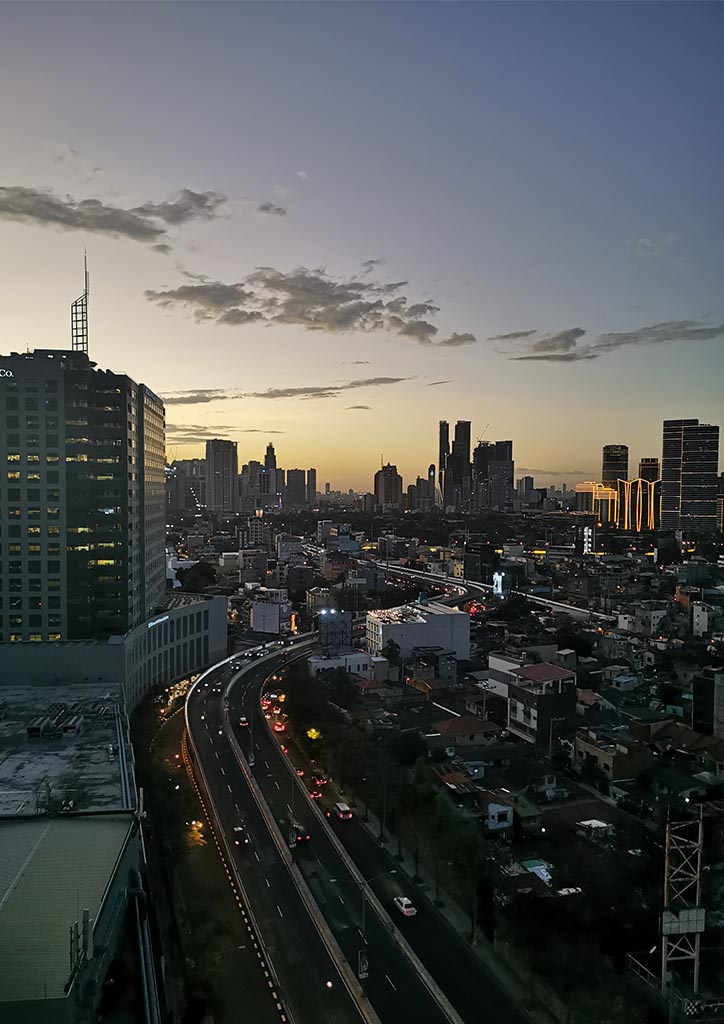
Poco: In a way, mayrong aspect diyan na baseline–you need the space, the infrastructure, the lifts, and the reception lobbies to plug all of this in. The second aspect is the building services, like ventilation systems. For Medical City, I joined an inspection of the ventilation plant for the delivery and operating rooms which are on separate floors. The ventilation and filtration plant is on a level between them, and it has ducts both going up to the delivery rooms and going down to the operating rooms, which showed gaano ka-intensive ‘yung ventilation requirements. The clean rooms were almost semi-conductor-grade. There’s a balancing of pressure required. There’s positive pressure at the door to keep pathogens out, but then there’s negative pressure closer to the patient as well–very specific design parameters.
Of course, all these facilities are in an air-conditioned setting, where you’re trying to keep it clean and maintain some degree of thermal comfort. Imagine if you have to design for settings that can’t afford air conditioning? For example, the design of temporary quarantine facilities using tents. These could produce a hot and stifling greenhouse effect in which patients would struggle to feel comfortable in. Much more for the medical workers who have to go into these spaces with PPE.
YOU MIGHT LIKE: John Ryan Santos + Partners proposes COVID-19 isolation facilities buildable within two weeks
Carlos: Some of these facilities, due to the expediency in which they are built, are restricted by the availability of material to be delivered on-site, installed with as low a skill as possible, and not designed with a longer-term shelf life, so they can only serve a very short period of time. On the other hand, there are conversions of larger spaces like the Philippine Sports Complex, in which there are partition walls and service lines running between the units. These are robust facilities that can respond to very temporary situations at scale, and with the number of cases continuing to rise they appear to be medium-term applications.
Poco: That’s why I’ve been more partial to converting existing structures like what Archion is helping the government with now. It makes more sense converting or adding to something that’s already there, than building something from scratch that could be haphazard, not necessarily code compliant, and could itself be a safety risk to people.
We seriously have to consider how long these “temporary” structures last if this pandemic will hit in waves over a long period of time. If these facilities ever have to hold spillover COVID-19 patients, they will require oxygen tanks and ventilators. The moment you put an oxygen tank into a temporary space with combustible materials, it’s a fire safety risk. Also, how will these structures withstand typhoon season? It’s well-meaning pero there are risks and I hope the facilities are able to account for and manage them for the sake of the patients and front-liners that will use them.
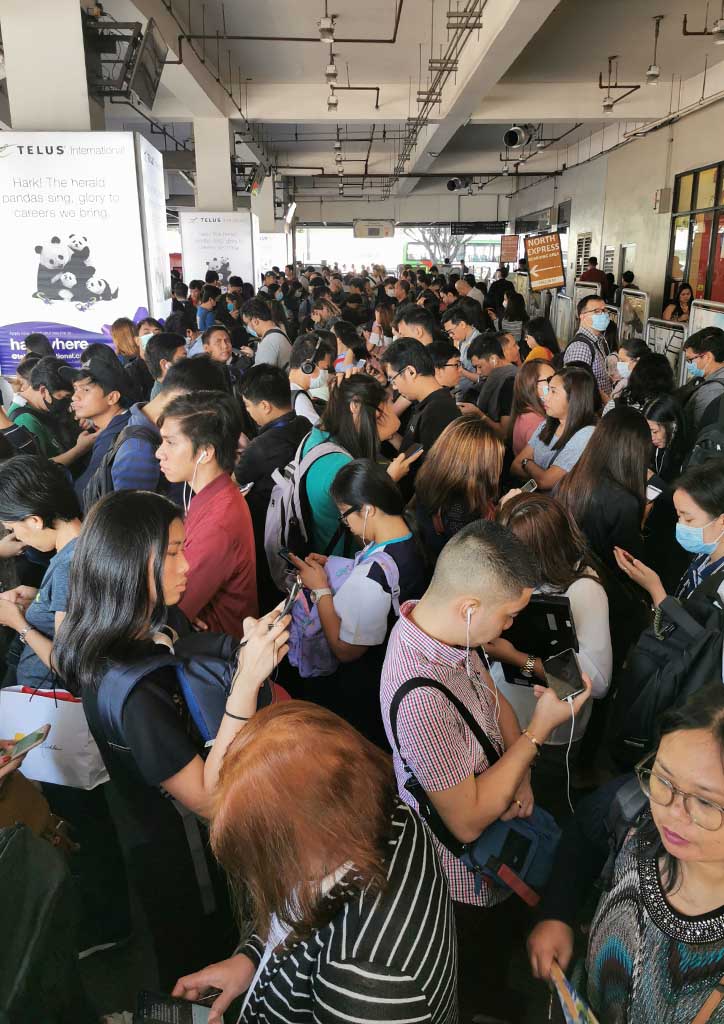
Carlos: What holds designers and central or local governments back from tapping into existing building stock which is underused? Why has that not been pursued as actively and, as a result, designers have to resort to more bottom-up solutions?
Poco: It’s still top-down control and ownership of land and facilities. Appealing to the kindness of these private businesses and institutions is not easy.
On the flip side, if you try to approach other government agencies, say the Department of Education (DepEd), with the building stock of public schools, baka may chance. I was discussing this idea amongst other architects and private businessmen in Bicol na sana dapat ‘yung mga skwela ang i-convert kasi mas maluwag ang sites especially in the provinces, and at least code compliant and madaling i-fitout. But of course, the task force came up with guidelines defining that an LGU cannot just convert a school without the approval of the local school board.
READ MORE: An architect and a landscape architect suggest use of Quezon Institute as COVID-19 hospital
Carlos: Why? What criteria do they have? Or, is it more that they don’t want to divert and invest their efforts in trying to facilitate this conversion happening?
Poco: Perhaps they also don’t want their facilities contaminated, because they’re still hoping that teachers and kids would be able to go back to school. The guidelines devolved this specific decision-making process from the national level to the LGU level. There are so many moving parts and it’s a challenge to make things work with many layers and entities to provide approvals. If there was a concerted effort to distribute these quarantine facilities to the schools, or at least to the school gyms, this could have been a practical strategy.
Carlos: In other cities, for example, in Pasig, we’ve seen the Philippine Sports Complex being converted. Some cities are really trying to do what should be done.
It makes more sense converting or adding to something that’s already there, than building something from scratch that could be haphazard, not necessarily code compliant, and could itself be a safety risk to people.
Poco: Pero from what I understand those are centrally operated.
Carlos: Because there are so few of these facilities, they become centers.
Poco: Yes, and also there’s also a dearth of supplies, equipment, and manpower, so it’s better to concentrate resources in these centers.
Carlos: Moreover, if hospitals and healthcare facilities are already understaffed, per patient population, how are these hospitals that these tents or facilities serve, going to assign enough personnel to them. How are they going to spread out themselves even more thinly to try and operate these facilities around the clock?
Poco: That’s why the concept of having a critical mass of patients and carers in a center makes sense due to the economies of scale. Let’s say you’re able to keep a doctor or carer to patient ratio of at least one or multiple times more than the normal ratio, then you’re taking advantage of having everybody there and supplying and staffing just one area rather than distributing services to so many other places. It’s not just an architectural problem, it’s an operational one.
YOU MIGHT LIKE: Menarco CEO: Healthy Buildings Are a Human Right
Carlos: This goes back to a more philosophical question of what architecture, sometimes, very self-righteously claims that it can make a difference to peoples’ lives. This is proclaimed throughout the industry. If you step out of the bubble and critique what it is architecture is trying to serve, on one hand, architecture sometimes isn’t the solution, and it’s more a strategic or systematic solutional way of thinking that’s needed. Architecture is quite static. It’s very finite and defined. In a way, it’s crystallized from the concept stage, and flexibility or contingency is only integrated by the time the building is fully constructed. Architecture, for the most part, is not inherently flexible. Even though many architects can claim that buildings have flexibility, it’s essentially about accommodating different types of programs within the same type of space or a single space. It doesn’t point towards the multidimensional responsiveness we need in the context we live in today. If we eradicate this very deterministic way of thinking, what agency do architects still have today and for tomorrow? It’s less about remaining relevant. It’s about trying to maximize the skills that architects have in terms of organizing space and consolidating disparate aspects of what’s needed into flexible outcomes. Where do you think design or architecture can go?
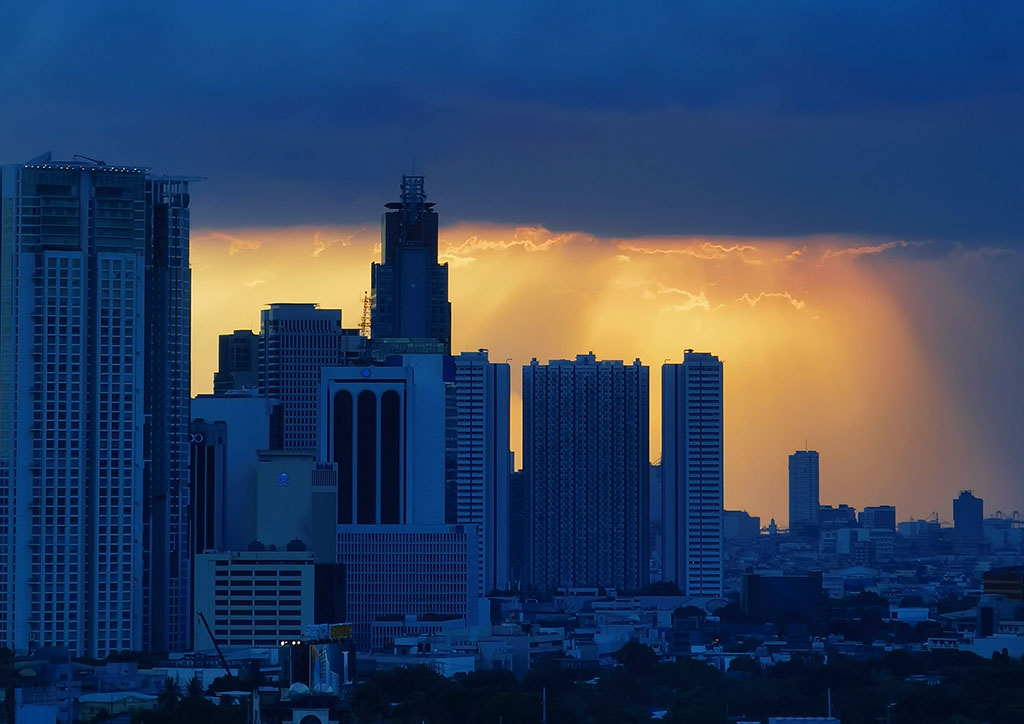
Poco: I think the short-term discussion on this COVID-19 has some overlay with the longer-term discussion on climate change and commodity scarcity. At some point in the near future, the most sustainable thing to do is not to build. In a world where we try to build less, due to scarcity and many other factors, the skill set of an architect has to adjust and perhaps focus on repurposing what’s already there. The issue with repurposing spaces is that there is a lot of inertia in our built environment. This inertia is formed by factors like ownership, building program and use, durability, and so on. These must yield and flex for the architect to be of use. In a mindset of scarcity and resource conservation, architects must become the activators of this inertia.
In the same way that adaptive reuse is supposed to reactivate old parts of cities rather than destroying them and turning them into regentrified districts, perhaps adaptive reuse can be expanded on sustainability, climate adaptation, and disaster resiliency level.
Thinking about this further, if you’re building something new, instead of programming its spaces and uses to the hilt, perhaps the key to reuse will be to just build a big roof over a space. You’re now free to repurpose it whatever way you want. The fenestration, ingress, systems, etc. will be ultimately reliant on what’s happening inside. The façade or the skin becomes a negotiable element. What you’re really designing for or engineering is the structure that covers the whole thing on top and the kinds of interfaces that will allow you to repurpose it in the future. By designing it that way, you’re injecting latent agency, and the opportunity for a building’s inertia to move again.
READ MORE: How do we make sure Asia’s megacities are healthy cities?
Carlos: A lot of architects were talking about this decades ago when they’re thinking about the future, such as the Archigram or Metabolist movements—the very idealistic notion of a big shed or infrastructural framework, within which plug-and-play elements respond to future demands or needs.
Additionally, what value does the architect still have in times like these? What is different about what an architect, designer, or planner does, that differentiates themselves from a governor, a member of authority, or an influential figure with a more public agency?
Poco: Two things. The logo of The Bartlett (University College London, UK) is a rectangle with an opening. I asked them why this is the case. They said it’s because that’s what the built environment is: it’s an interface between the common outer realm and the inner private realm. Whether the inner realm is private or public, it really depends. But the idea is the moment space is enclosed, it becomes something within, and someone’s domain.
In this light, with what architects and planners do, we are moderators of these private and public realms of the built environment—a moderator for private and public interest. The difficulty is where the moral sentiment of the architect lies. If you’re a regulator of what is private and public good, where do you place yourself when responding to the client’s brief, vis-a-vis your internal agenda or artistic expression, and the common good. The role of the architect or planner has some magnanimity in dealing and opening up certain aspects of the built environment to the public, and granting spaces for the public good, but also the complicity of keeping things exclusive as well. We help giveth and taketh.
In a mindset of scarcity and resource conservation, architects must become the activators of this inertia.
Carlos: In terms of where the architect stands on the moral spectrum, another philosophical question: Should the architect be the individual that defines this, or is it more that the client or the authority at hand should be defining what the direction should be? Architects, by all means, should align their philosophy and belief or motivation as much as possible, but at the same time not overwhelm what the outcome is with their own ego or agenda.
Poco: Most projects start with the client’s intent and initiative. Hindi natin hawak ‘yun. So kung intent ng client to make something nice, and we make something nice, then we’re complying with that intent. This doesn’t necessarily mean creating for the public good (maybe only for them to look at from afar). So perhaps, architecture (and planning) becomes a mediator of public good when you’re able to subvert the client brief by subversively injecting a public agenda, without the client knowing, or with the client knowingly agreeing to it.
YOU MIGHT LIKE: Build a Better Normal: Advising Clients in a Brave New World
Carlos: There are some instances in which the client doesn’t know what they want or they have a half-formed idea. Subverting the brief in some instances can offer the client something above and beyond what they expected, because maybe they’re used to a certain way of thinking, and the architect can translate what the client means from what they say, even if they’re not initially fully aware of where an idea can go. In some ways, it’s a risky strategy for the client to hire starchitects. The client obviously knows that they have the reputation for designing unique, one-off pieces, and they latch onto the brand or supposed philosophy that the architects push. Then they surrender control to the starchitect. They want to find a brand, style, or approach to design to serve their needs and elevate their own business.
Poco: It’s a brute force, “the reputation precedes me” kind of thing.
Carlos: It also precludes the opportunity for a very open discussion because the architects will have a predetermined idea or process that they follow to produce the architectural outcome they want. That’s one end of the spectrum. The other end is the architect who is fully subservient to a client who really wants to gun for something with little or no compromise.
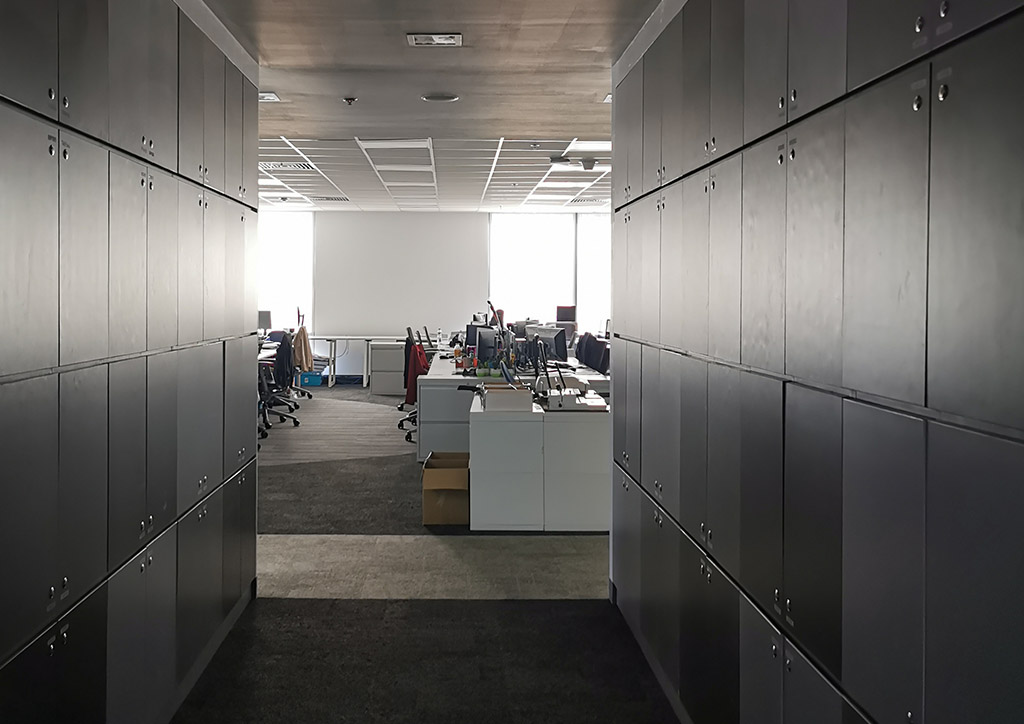
Poco: This is where architects and planners have to hone their skills–we know drawings are the optimal communication tool for us. But so do the narratives and stories we package and weave into a project. I’ve gotten tired of it–this is what led me to study spatial analysis and evidence-based planning and design. I thought that, perhaps, a more powerful way to secure buy-in for certain things is through proven reason.
Carlos: In other words, what concessions can the architect, planner, or urban designer negotiate from the developer who has the resources? Private developers have the resources, the land, and the space to be able to allow for some wiggle room so that the designer can approach a project from the best public realm or public good point of view. You’re elevating what’s already existing or addressing a gap that does not currently exist.
READ MORE: Tolentino’s Manifesto
Poco: Paraphrasing Adam Smith’s Theory of Moral Sentiments, he says people move in the economy and society out of their self-interest. So isipin na lang natin, dalawa lang naman ‘yan: You do it because it either enhances your reputation, or you do it because it directly profits you, or both. That’s the harshest reality of corporate and individual goodness–whether you appeal to their vanity or you appeal to their profit-motive, there is latent self-interest.
The best starchitects can manipulate these motivations and do so both ways. They do so by being great communicators through drawings, and by telling stories as well. So, questioning self-interest is academic. You won’t be able to figuratively beat more from a horse with only two speeds. The question is, can you lead the horse to different places rather than just running around its self-centered track?
Ideally, we begin, as architects, by happily complying with the interests of the client, then to build on the brief by starting a negotiation of planning and design values using evidence and reason, with the public good in mind.
That’s why form-driven projects to me are like, “What?! Really, you got away with that?! How the heck did you fool this guy…”
Carlos: …to spend the money to do something which is excessive?
[one_half padding=”0 10px 12px 0″]
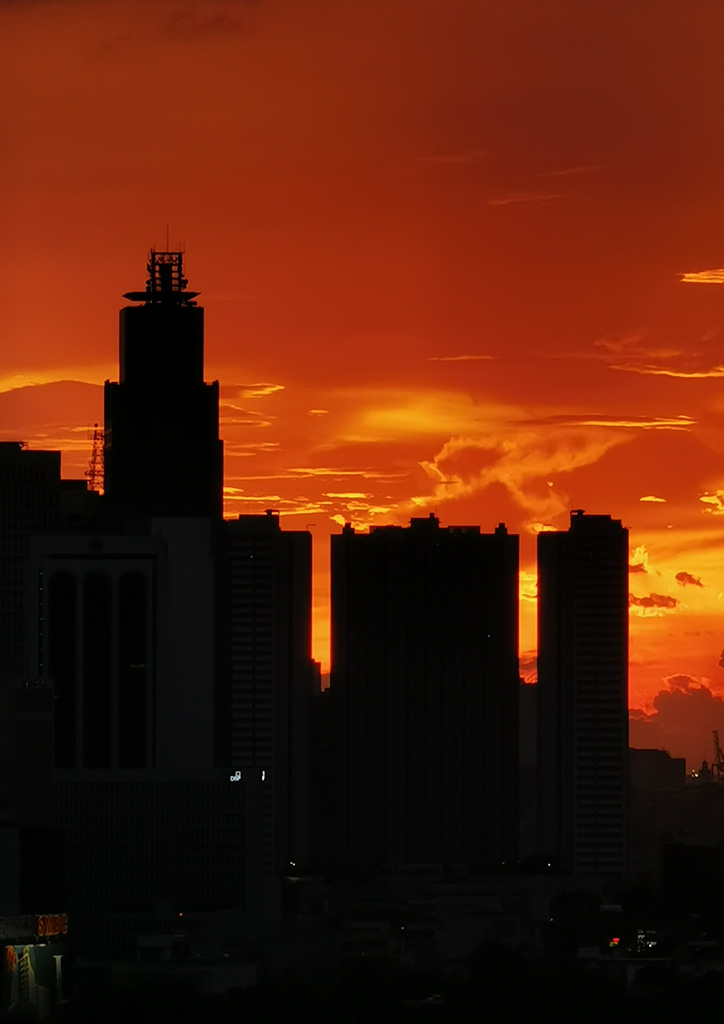
Poco: What Kool-Aid did the client have to drink to happily stroll into your fantasy?! Pero in the end, you see the architect as a heroic creator, standing alongside the project—ganda ‘di ba, parang ‘yung perspective?! It’s like Steve Jobs’ reality distortion field. That works when you create singular objects like a private house or smartphones. When you work on a bigger scale with more stakeholders, however—even if it’s a private project, it’s a different matter entirely. The mistake is when architects think that they can take that narrative-driven, object-making on the scale of the city without fully understanding the complex processes and frameworks that go into building one.
Carlos: We’re talking mostly about private client and architect relationships. I was reading about what ex-NEDA Chief Ernesto Pernia said, about resigning over the differences he had with others in government.
He mentioned that since the 1980s, the government has surrendered control of the urban environment to private developers, and they’ve become the predominant force in terms of small developments within the larger city that represent the highest standard of the urban experience. Now, the focus is very much on the government and public agencies, and both private and public organizations are at least talking to each other in a way that, because of the necessity of the situation, they simply have to try and collaborate much better. They’re also trying to reach out to these private entities–some are more generous than others. Private entities have provided funding and solutions to what the government currently cannot provide.
YOU MIGHT LIKE: NEX Tower’s humanist design makes good business sense
Historically, kings and queens used to build boulevards and have a very generous public right of ways and parks. They would build parks as vanity projects and most likely built at a sacrifice to the workers’ wellbeing, under substandard conditions, underpaid, and overworked. Ultimately, they’re still here and the public still uses them. There’s a sense of identity because they belong to the city. What’s needs to change for cities here in the Philippines such that public spaces are once again held in high regard and can give something back to the wider public? Today, the best ‘public’ spaces are very privatized. Moving forward, how can some of the impetus return to public-driven agendas from this point?
Poco: The place that comes to my mind when you talk about kings and queens, creating grand public spaces, public places, and so on, is the entire Cultural Center of the Philippines (CCP) complex. It was reclaimed and supposed to be an international airport. Marcos turned it into a grand project. On a nice weekend, there are people exercising and enjoying the spaces. It’s one of those open spaces within the range of the very dense urban fabric of Manila and Pasay.
Paraphrasing Adam Smith’s ‘Theory of Moral Sentiments,’ he says people move in the economy and society out of their self-interest.
For me, it’s like Disneyland kasi the spaces and forms could be considered inauthentic–transplanted modern brutalism, but the feelings of joy and release that the public experience while roaming its open spaces are authentic. It could be considered a modern brutalist dystopia, but the positive feelings are real. The thing is, it’s a sign of how bad neoliberalism has gotten when the administration says we’re going to sell it! [Laughs]
Carlos: It might have just been mentioned, but that would really put the nail in the coffin for one of the last areas in the city where you can openly use space as such. You won’t see people jogging up the CCP ramp anymore if it’s sold.
READ MORE: Order, nature, and the human spirit—some thoughts on placemaking
Poco: It’s neoliberalism, the same market forces that privatized Fort Bonifacio into BGC are now tempting the government to just sell off more public land (not necessarily just the CCP). Land, at the end of the day, is agency, because it’s an opportunity to make something of it. By government selling land, they’re giving up significant control and agency. And once the toothpaste is out of the tube, ‘di na maibabalik ‘yan.
Carlos: Then there’s the almost non-existent conversation about socialized housing. It’s not even on anyone’s agenda, even though it’s writ into guidelines and policy. How are we going to address this moving forward?
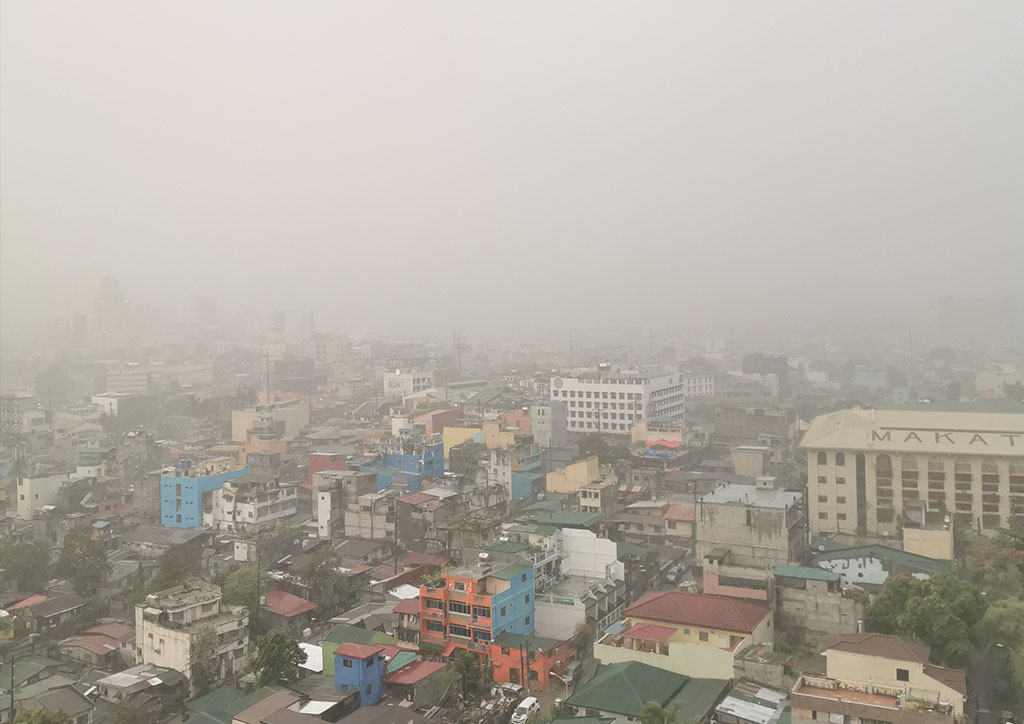
Poco: I’m going to pull from two things. The first is, neoliberalism defines that governments should not pick winners, that governments should step away from economic activity, and let the ‘free’ market run. What we’re seeing now is that only governments have the scale and the wherewithal to get things done during a pandemic like this. They can do it in a bigger way than any of our business casas or taipans, because they’re the only entity who has the national and overseas network, the manpower, and the resources of a whole nation, to mobilize against a pandemic threat. Of course, that depends on the capacity and capability of governments to do so. Expect varying results across different countries, because leadership is political and all politics is local.
The second idea is, how order has surmounted structure. When you talk about structure, you’re looking at systems that define how we treat each other in society. Examples include our country’s laws, and our LGU structure of regions, provinces, cities, municipalities, barangays, and so on. On the other hand, order is something local, the imposition of uniformity in a specific area, such as a private gated development.
YOU MIGHT LIKE: Post-Pandemic Deconstruction
I think the neoliberal shift is about prioritizing order versus structure. That’s why people prefer gates and containing spaces as a form of maintaining peace and order because our political-economic structures have eroded due to entropy. There is distrust of the structure that was supposed to govern our society. The way things are, na-focus ‘yung priority ng tao sa order kasi hindi nila makita ‘yung fruits of structure, and it’s extremely challenging to structure a diffuse archipelago.
So globally, perhaps this crisis is the one that reshuffles the deck and sheds light on the importance of structure and re-empowering governments. On the flip side of this, there’s also the fear of the totalitarian state or the police state, when the democratic structure, which is reliant on messy coordination and collaboration between different interests, is replaced by uniform order through top-down command.
What we’re seeing now is that only governments have the scale and the wherewithal to get things done during a pandemic like this.
There are so many layers to this that, to an architect or environmental planner, wala sa usapan ‘yan eh. Ang trabaho natin mag-plano at mag-design nang tama, hanapbuhay natin ‘yun, tapos ‘yung usapan. Wala nang dramang ganyan. Pero as a planner and urbanist, it’s these abstract elements that form the fertile ground that lets good design for the public grow from.
Now, there must be a middle ground. Our country is a model for Public-Private Partnership legislation and mechanics. And these PPPs have been instrumental when it comes to heavy infrastructure like expressways. In our quest to build highways, however, they’re forgetting that the most elemental form of public-private partnership–and conflict–is the street. If we seriously want to reinvigorate communities, this partnership must go into the fine grain. You have to inject some agency on the ground at the street level, activating this realm with some density, allowing some retail land uses, open spaces, and green infrastructure. Similarly, we seem to be unable to imagine the PPP system as a means of injecting agency to land by financing and producing inner-city housing for the working class.
READ MORE: Frameworks for Development: Creating investable cities through LIFE and authenticity
Mariana Mazzucato of UCL points out that our current form of capitalism has not been able to properly account for value in other ways outside of what is in an immediate economic transaction. This is why the work of stay-at-home mothers are not even counted in GDP. This could also explain why residents of a mature village or subdivision are not able to see how their own property values benefit by allowing some form of public services, high-street retail, public transport, and the like to come in and change the character of their neighborhoods.
This is the reason why order is prioritized and other negative externalities are kept out. That’s why the social housing component of these mixed-use estates is unintentionally evicted by the invisible hand outside of Metro Manila’s prime land because nasa batas ng socialized housing to provide low-cost stock within open-market sites, but these are permitted to be traded and constructed off-site. It’s not-in-my-backyard-ism (NIMBYism). They protect their land values, but by doing so, end up depriving the city of its core workers.
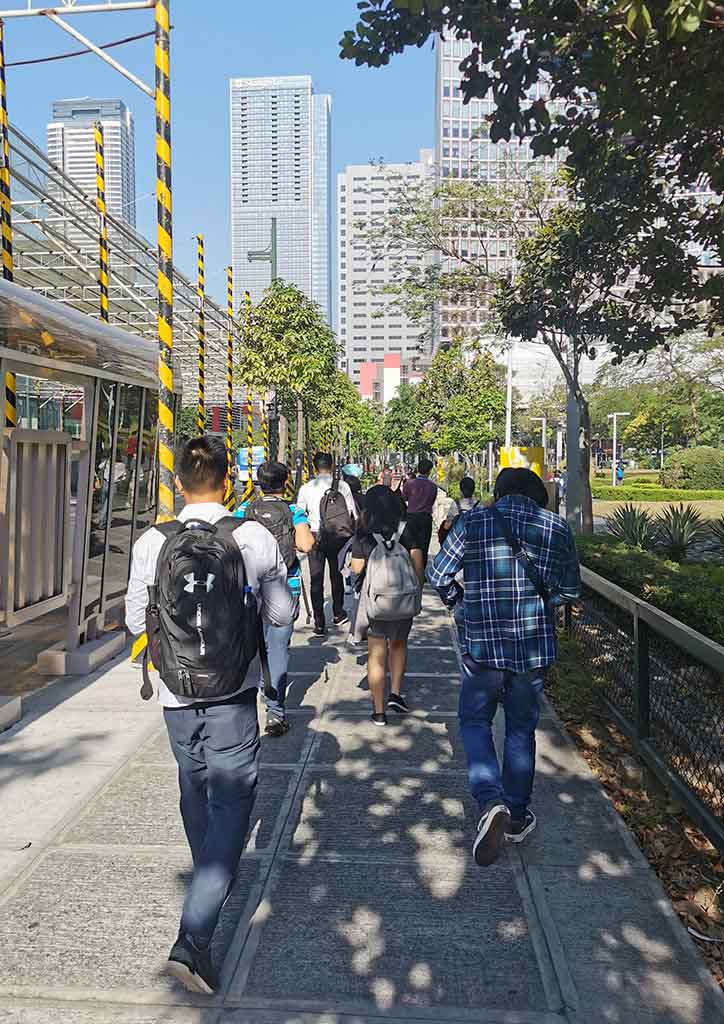
Carlos: What this also points to is the difficulty for front liners and key workers to travel to the places that they need to work. Many workers are, because of the lack of public transport or transport provision, walking in the heat for several kilometers on end. They don’t live close to where they work or anywhere near the catchment area of the people that are going to be served at these facilities. Everything is too far for people to be where they need to be within an efficient amount of time so that the city’s workers can serve their roles effectively. Moreover, our communities are not planned such that retail or healthcare workers can afford to live close to these urban centers. It’s the lack of mixed-income housing and services in communities that prevents different sectors to be close together in order to have a more conveniently interconnected city.
Poco: The monoculture of single-use planning and low-density is killing itself. The lack of diversity in our CBDs and private vertical enclaves is suffocating themselves because these require a certain number of service workers to run and to be nearby.
Carlos: The formula is not working.
Poco: This is why informality flanks our main CBDs. Now, the discourse is to decongest Metro Manila by transferring people out of it. The question is: will jobs follow them? Isn’t that already the problem we have with our existing relocation sites and our socialized housing projects? It’s nice to be able to say we plan CBDs and private estates as live-work-play hubs, but we need to ask, for who?
Carlos: There isn’t a proximity of facilities and jobs where residents of these social housing sites can access.
YOU MIGHT LIKE: Filipino Form and Substance
Poco: It’s an awkward reinterpretation, but the house helper or driver’s room is like the social housing component of a single-family home. Households like these care for their staff because they live in-house and follow the rules of the household and the working terms of their employment. Their interactions are governed by that power dynamic.
One of the things that happened quickly when this pandemic hit is how critical industries, like BPOs and essential manufacturing facilities– businesses who cant work from home–were forced to house their staff in temporary dormitories, or contract hotel rooms and condominiums for housing. This effectively replicates that power dynamic. Confinement into a vertically-integrated model, where live-work-play (if they ever get the chance to play or relax) happen in a space of employment–no different from China’s factory towns.
Contrast that to what happens in an organic city such as London. What’s interesting is how the de facto Filipino Town of Earl’s Court is close to all these wealthy communities in London. That’s where our nurses, nannies, and the rare graduate student goes to get supplies, a Chickenjoy, and meet other Pinoys. May mixing pa rin siya, and may proximity pa rin siya with other ethnic groups, and other parts of the city. It still feels like a city. It’s not a segregated space governed by the rules of the employer that the Filipino community serves in London.
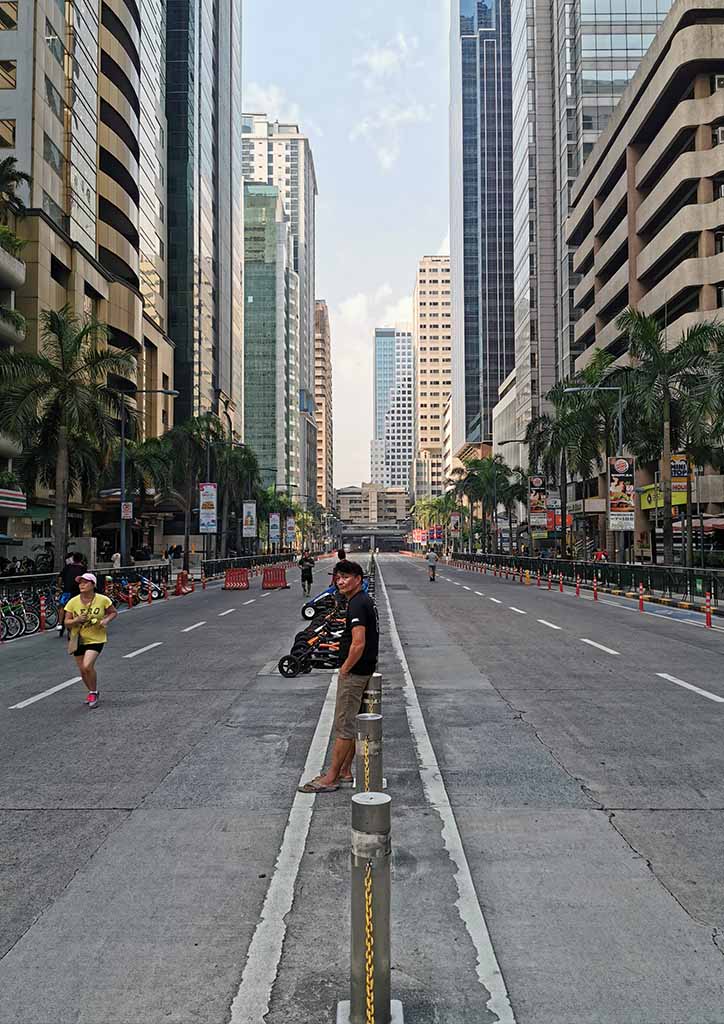
Carlos: In the case of Earl’s Court, at least when the service workers have a time off, they can still enjoy the city. I’ve always thought that they can enjoy a quality of urban environment on their own accord. They can still go to a local eatery, have a pleasurable walk around the block, or go to a park. They can go to the shops themselves and buy what they need.
Poco: That’s why in the gated villages, the in-house service population can’t help but feel very imprisoned. Take it further–kung ma-restructure ‘yung mga villages to have walkable points-of-interest–like neighborhood shops and services within, and behave more like a diverse, self-contained urban village, then both residents and household staff won’t really need to go out anymore, ‘di ba? Their collective quality of life improves. People can walk or cycle and choose to live locally. Of course, there have to be rules to govern and manage this so that it doesn’t evolve into a laissez-faire condition.
I think it’s the subversiveness of being able to define the interface between the common good and private interest–that is the crux of what being an architect-planner is. Kasi if you think you’re contributing to the public good by coming up with an architectural object, something nice to look at, first level, first-order public good lang ‘yun. There are many layers to having space as a public good, like engagement or activation. The problem is the way that architecture has been defined and taught locally is that it has always been firstly about authoring something aesthetic. The other aspects trail behind.
READ MORE: The Juggling Act of an Urban Planner
Carlos: I don’t think it’s limited to this country. It’s feeding into the discourse that architects are still the romantic creators and that we have to design something which relies on being distinctive in a very competitive industry. The whole notion of trying to be visually distinctive drives the purpose of what architecture is, and takes the focus away from addressing the needs it purports itself to serve. It’s a more systematic problem because what sells or what attracts clients is what looks good and novel. Architectural education has come to a point where it’s all about the polished end product, and it’s a very consumerist way of thinking.
There’s so much that is overbuilt in Metro Manila, that when it’s in full flow, it’s counterproductive. Look at how much most of us are staying at home and, without the traffic, is benefiting our productivity.
Poco: Looking forward–not even accounting for politics–our world’s demographics are changing, and our geography and resources are affected by climate change. These point to how we could be in the opening chapters of a novel that will tell of how humanity’s value system will change, or how we hold on to our ways, despite our impending demise.
I think it’s the subversiveness of being able to define the interface between common good and private interest–that is the crux of what being an architect-planner is.
Carlos: It points to a need to be more agile and responsive. Architects can no longer remain or be fixated on a single idea or approach.
Poco: We don’t know what we’re heading into. We need our heads up and eyes open.
Carlos: The repercussions will continue to be felt for a few weeks, a few months, and even years to come.![]()
Leandro Poco completed his MSc Space Syntax: Architecture and Cities degree at University College London’s Bartlett Faculty of the Built Environment. He previously completed his MA in Urban Design at the National University of Singapore in 2008. He is a Philippine registered Architect and Environmental Planner with over 15 years of combined Planning and Architectural practice experience in both Manila and Singapore. He is a Partner with Leonardo A. Poco & Associates, Architects, and has a keen interest in Metro Manila’s urbanism. He believes that evidence-based planning and design are key to improving Metro Manila’s dystopia and addressing her residents’ discontent.
Lawrence Carlos is a Senior Urban Designer for AECOM Philippines, with a background in architecture. He previously worked for Rogers Stirk Harbour + Partners and Make Architects in the UK as well as the Technical Services Group of the London Borough of Newham. Carlos’ master’s degree research included an evaluation of the emergence, success, and longevity of techno nightclubs and the subcultural community in Berlin as a case study for reviving abandoned and derelict spaces in the city. He is formerly the associate editor of BluPrint magazine.


